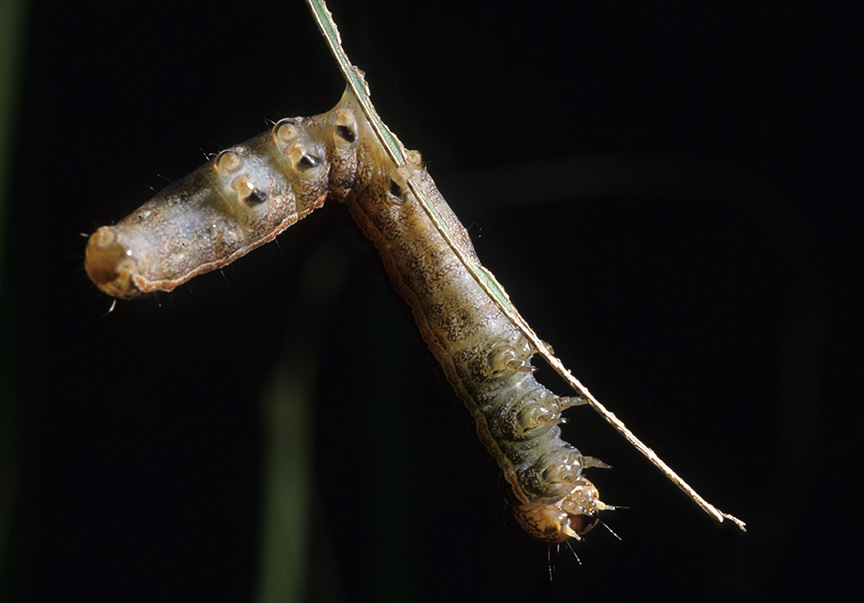Many black cutworm trappers have captured large numbers of moths, see “Black Cutworm Pheromone Trap Report.” In trying to find levity during the Covid-19 pandemic, there have been various quips during their reports about this pest’s lack of adherence to our social distancing guidelines! These Hoosiers are not “hunkering down,” as the governor has ordered. In fact, insects are subject to many diseases, sometimes decimating local populations. Like human diseases, high population density has a strong predictive effect on disease prevalence and spread. Unfortunately, these diseases, called epizootics in insect populations, often occur when populations are extremely dense and well after damage has been done to our crops.
FUNGAL epizootics in insects/mites are relatively common during periods of high temperatures and humidity. Often, without us even noticing, threatening populations of soybean aphid, two-spotted spider mite, potato leafhopper, to name a few, are kept in check by these pathogens. Less common are VIRUS epizootics, the most recent vivid example was with the “great outbreak” of armyworm in 2001. Days after “armies” of caterpillars had eaten through grass hay and cornfields, limp and listless armyworm were being seen up on the stems of denuded plants and picked off easily by hungry flocks of birds. It wasn’t insecticides that finally brought this nemesis to rest, but rather mother nature…a virus! The following information on nuclear polyhedrosis viruses is from the Midwest Institute for Biological Control, circa 1997:
“Insect larvae infected with nuclear polyhedrosis viruses (NPV) usually die from 5 to 12 days after infection depending on viral dose, temperature, and the larval instar at the time of infection. Just before dying, larvae often crawl to the tops of plants or any other available structure where they die and decompose. Millions of polyhedra are contained in the fluid mass of the disintegrating larvae and fall into feeding zones (leaves, leaf litter) where they can be ingested by other conspecific larvae. NPV epizootics are very impressive and, although they are important as naturally occurring mortality factors for many insect species, they often occur after the pest insect has exceeded the economic injury level. This is especially true when the crop that is being damaged by this insect has a relatively low economic threshold.”
There have been many efforts over the years to deliver these viruses to the field as targeted insecticides – they offer many advantages over chemical insecticides: they are highly specific (often affecting only one insect species), offer high mortality, and, unlike chemical insecticides, offer the possibility of horizontal transmission (in other words, one infected insect can infect many others). However, these efforts have had mixed results at best – viruses are not hardy in the field and keeping them viable in sprays and baits remains the key challenge. UV light, heat, and other environmental stressors reduce their efficacy and longevity in the field.
The good news, yes, insect pests do get diseases, both fungal and viral. The bad news is that large populations need to be present to spread the pathogen throughout, so they are not something that pest managers can count on to help protect their crops.



